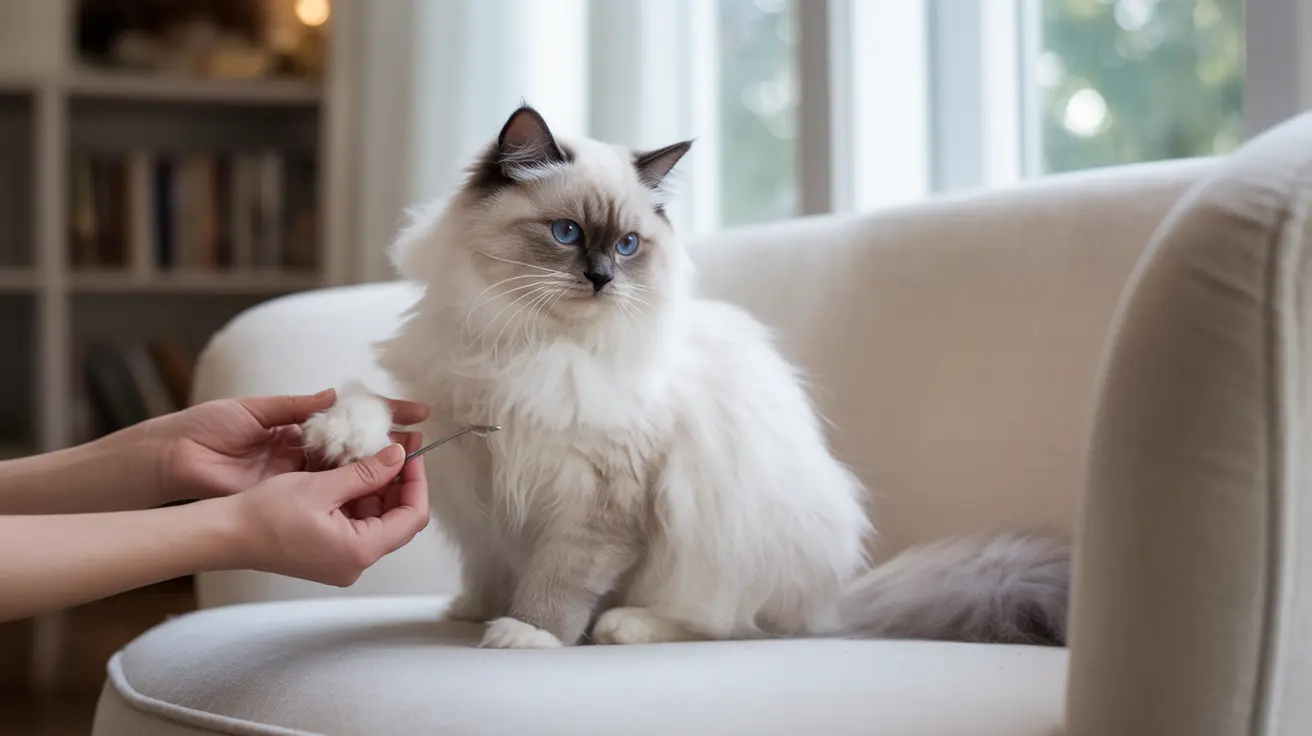A cat's broken nail can be a painful and potentially serious injury that requires prompt attention. Whether caused by trauma, overgrown nails, or underlying health issues, understanding how to properly treat a broken nail is essential for every cat owner. This comprehensive guide will walk you through the steps of assessment, treatment, and prevention of cat nail injuries.
Understanding Cat Nail Injuries
Cat nails are complex structures made of layers of keratin, with a sensitive quick (blood vessel and nerve supply) running through the center. When a nail breaks, it can range from a minor split to a severe injury that exposes the quick, causing pain and bleeding. Understanding the severity of the injury is crucial for determining whether home care is appropriate or veterinary attention is needed.
Signs of a Broken Cat Nail
Early detection of a broken nail is vital for preventing complications. Watch for these common indicators:
- Limping or favoring one paw
- Excessive licking of the affected area
- Blood drops on floors or furniture
- Visible nail damage or hanging fragments
- Vocalization when walking or when the paw is touched
- Swelling or redness around the nail bed
Immediate First Aid Steps
Assessment and Preparation
Before attempting treatment, gather these supplies:
- Clean towel for restraint
- Styptic powder or cornstarch
- Pet nail clippers
- Antiseptic solution
- Clean gauze
- Treats for positive reinforcement
Treatment Process
Follow these steps for minor nail injuries:
- Gently restrain your cat using the towel wrap method
- Control any bleeding with styptic powder or cornstarch
- Clean the area with antiseptic solution
- Carefully trim any hanging nail fragments
- Monitor the area for signs of infection
When to Seek Veterinary Care
Certain situations require immediate professional attention:
- Excessive bleeding that won't stop
- Exposure of the quick or bone
- Signs of infection (swelling, pus, odor)
- Severe pain or aggressive behavior
- Complete nail removal from the bed
- Any uncertainty about proper treatment
Prevention and Long-term Care
Prevent future nail injuries with these measures:
- Regular nail trimming every 2-4 weeks
- Providing appropriate scratching posts
- Maintaining a balanced diet for nail health
- Regular paw checks during grooming
- Addressing any underlying health conditions
Frequently Asked Questions
What are the common signs that my cat has a broken nail and needs veterinary care?
Look for limping, excessive paw licking, visible nail damage, bleeding, swelling, or signs of pain. If you notice infection symptoms like pus, redness, or unusual odor, seek immediate veterinary attention.
How can I safely clean and treat my cat's broken nail at home without causing pain or infection?
Gently clean the area with pet-safe antiseptic, control bleeding with styptic powder, and carefully trim any loose fragments. Always work slowly and reward your cat with treats throughout the process.
When should I bring my cat to the vet for a broken nail instead of managing it at home?
Seek veterinary care if there's excessive bleeding, exposed quick or bone, signs of infection, severe pain, or if you're unsure about proper treatment. Better to err on the side of caution with nail injuries.
What steps can I take to prevent my cat's nails from breaking in the future?
Maintain regular nail trimming schedules, provide appropriate scratching posts, ensure proper nutrition, and schedule regular veterinary check-ups to identify potential nail problems early.
How long does it typically take for a cat's broken nail to heal, and what aftercare is needed during recovery?
Healing typically takes 1-2 weeks for minor injuries. During recovery, keep the area clean, monitor for signs of infection, and follow any veterinary instructions regarding medication or bandage changes.
Conclusion
While a broken nail can be distressing for both cats and their owners, prompt and appropriate care can prevent complications and ensure proper healing. Whether treating at home or seeking veterinary care, always prioritize your cat's comfort and safety during the recovery process.






